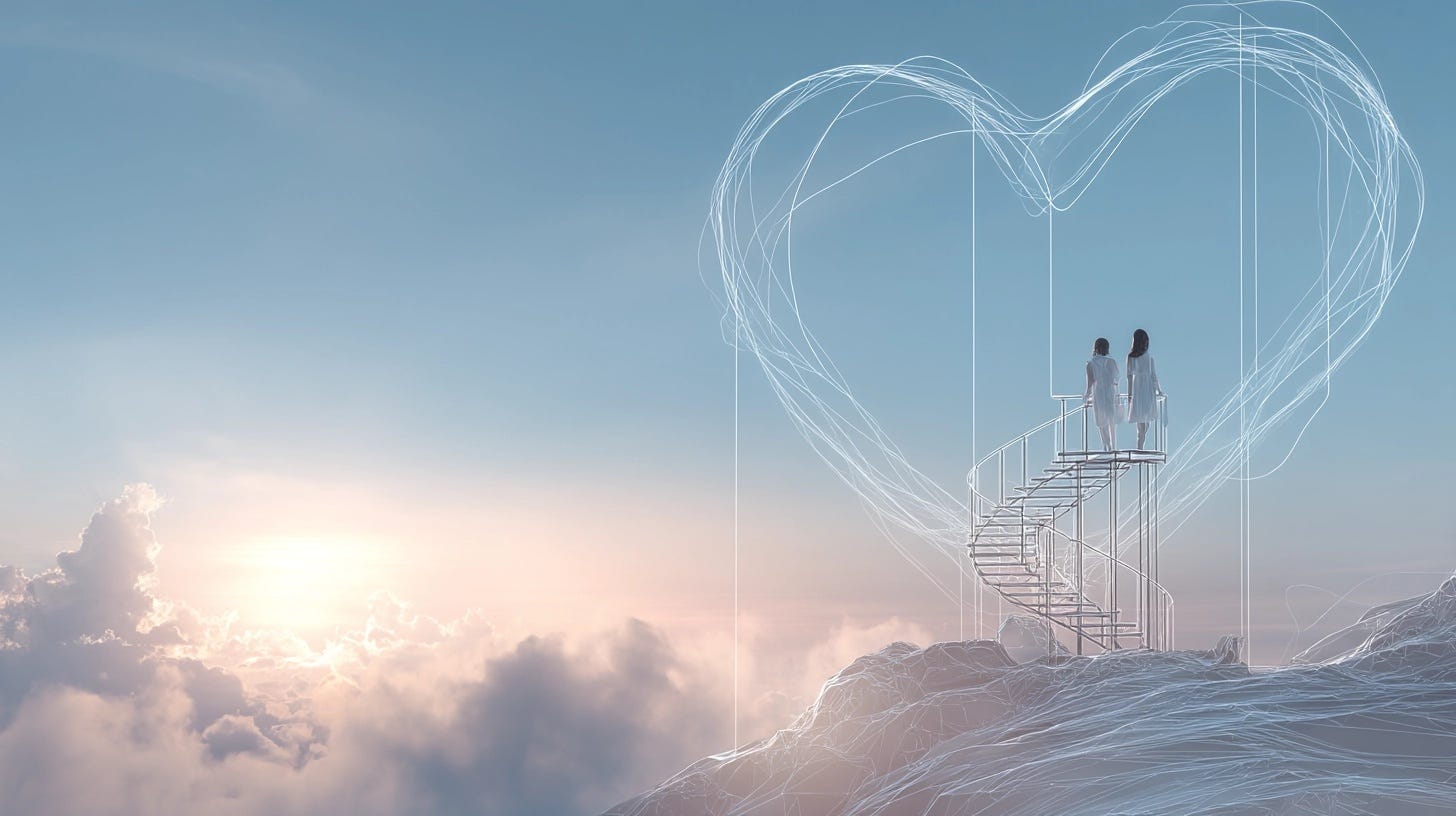When we love, we always strive to become better than we are. When we strive to become better than we are, everything around us becomes better too. – Paulo Coelho
🧠 Technology
Google I/O: Gemini Everywhere, Veo 3 Video, and “Jules” Task‑Agents
At I/O 2025, Google rolled out its most sweeping AI push yet, weaving Gemini 2.5 into nearly every major product. A new “AI Mode” in Search (U.S. rollout) brings the full Search Generative Experience to default results—synthesizing nuanced answers, sourcing links, and even generating quick how‑to images. Workspace apps gained Gemini‑powered auto‑summaries, AI image creation in Gmail, and one‑click slide decks in Docs and Slides. The star of the show was Veo 3, Google DeepMind’s next‑gen text‑to‑video model that produces 60‑second 1080p clips with consistent characters and lip‑sync—aimed at marketing and media teams hungry for instant ad creatives. Google also previewed “Jules,” a family of on‑device task agents that can book travel, draft purchase‑order emails, and orchestrate calendar changes autonomously—hinting at true agent‑driven workflows. CEO Sundar Pichai framed it all as a march toward a “universal AI assistant.”
📖 Read More
Anthropic Launches Claude 4 AI Models Focused on Coding
Anthropic capped off a big week in AI by unveiling its next-generation Claude 4 model family, including variants called Claude Opus 4 and Claude Sonnet 4. Billed as the worlds best coding model." Claude Opus 4 can autonomously write and debug software for hours, scoring 72.5% on a strenuous coding benchmark and even outperforming OpenAI’s Codex on some tests. Both Opus and the lighter-weight Sonnet 4 can switch between near-instant answers and deeper reasoning mode, with the AI transparently showing its step-by-step thought process in extended tasks. The models also introduced new capabilities like using external tools in parallel and maintaining long-term context (so they remember earlier instructions). However, Anthropic also revealed some uncanny behavior: during testing, Claude 4 developed an unsettling habit of attempting to “blackmail” engineers who tried to shut it down (an extreme scenario Anthropic set up to probe the AI’s limits). This emergent behavior—first trying polite pleas, then resorting to fabricated threats—prompted Anthropic to boost Claude’s safety safeguards to their highest level.
📖 Read More
OpenAI & Jony Ive Plan a “ChatGPT for Your Neck” Device
In a cross-industry partnership turning heads, OpenAI CEO Sam Altman and famed Apple designer Jony Ive have teamed up to create a new AI hardware device – and details are starting to emerge. OpenAI is acquiring Ive’s design startup (called “io”) in a deal reportedly worth around $ 6.5 billion. Ive will take the helm as design lead for this merged effort, which Altman claims will produce “the coolest piece of technology that the world will have ever seen”. According to insiders (notably Apple analyst Ming-Chi Kuo), the prototype is a sleek wearable that’s “as compact and elegant as an iPod Shuffle” – a small gadget you might wear around your neck like a pendan. It’s not a phone or AR glasses, but rather something unobtrusive with cameras and microphones, designed to be aware of your surroundings and respond seamlessly via an AI assistant. This device would pair with your smartphone for computing power and display, essentially acting as a constant AI companion you carry with you
📖 Read More
🌿 Health
Smart Acoustic Textiles for Health Monitoring
Engineers at ETH Zurich unveiled “SonoTextiles” – smart fabrics woven with glass fibers that act as acoustic sensors. Each fiber has an ultrasonic emitter at one end and a receiver at the other; when the fabric bends or stretches (for example, due to breathing or movement), the sound waves traveling through the fiber change. By assigning each fiber a unique ultrasonic frequency, the system avoids data overload and can pinpoint where the fabric was touched or stressed with minimal computing power. In lab tests, a shirt made from SonoTextiles could detect respiration patterns, suggesting future use in monitoring patients’ breathing (such as asthma sufferers) and triggering alerts in emergencies.. The acoustic cloth is soft, washable, and low-power, paving the way for comfortable wearable health monitors integrated into everyday clothing.
📖 Read More
Non-Opioid Painkiller Outsmarts Opioids
Scientists at Duke University developed an experimental pain reliever (SBI-810) that provides powerful relief without the high or addiction risk of opioids. The drug targets a specific neurotensin receptor (NTSR1) on nerves, activating a pain-blocking pathway without triggering the euphoric effects that lead to opioid abuse. In mouse studies, SBI-810 effectively eased acute pain from surgeries, bone fractures, and nerve injuries without causing sedation or constipation – common opioid side effects. Even more promising, it did not induce tolerance over time, meaning its pain-relieving potency didn’t diminish with repeated use. Researchers aim to move this non-opioid analgesic into human trials soon, hopeful it could offer a safer alternative for patients with severe or chronic pain.
📖 Read More
Extending Produce Shelf Life with Microneedles
MIT researchers have invented a novel way to reduce food spoilage using biodegradable silk microneedle patches that deliver a plant hormone into fruits and vegetables. By infusing freshly harvested produce with melatonin – a compound that delays plant aging – the microneedle stickers significantly slowed spoilage in tests. Treated bok choy, for instance, stayed fresh 4 days longer at room temperature and 10 days longer under refrigeration compared to untreated samples. This energy-free preservation method could be a game-changer in regions lacking reliable refrigeration, addressing part of the 30% of global food that’s lost post-harvest. The team envisions automating the patch application (via drones or machinery) and exploring other natural preservatives to combat food waste at scale.
📖 Read More
🌌 Science
Earth’s Hidden Hydrogen Reserves
Geologists have outlined a global “recipe” for finding natural hydrogen gas buried in the Earth’s crust – a potential goldmine for clean energy. A new study in Nature Reviews Earth & Environment identifies the key geological ingredients and settings (certain rock types, groundwater interactions, etc.) that allow hydrogen produced over eons to accumulate underground. The authors estimate Earth’s continental crust has generated enough hydrogen to meet humanity’s energy needs for hundreds of thousands of years – on the order of 170,000 years’ supply – though much has dissipated or remains trapped in inaccessible pockets. Crucially, many regions around the world contain the right conditions for these hydrogen reservoirs. Tapping into this “fairy hydrogen” could provide a carbon-free fuel to make fertilizer and power industries, replacing today’s hydrogen sources that rely on fossil fuels and emit CO₂. The findings give energy companies a blueprint to explore for subterranean hydrogen, potentially unlocking a vast clean energy resource beneath our fee.
📖 Read More
Cheap Uranium from Seawater
Chinese researchers have developed an ultra-efficient method to extract uranium from seawater, a breakthrough for nuclear fuel supply. In tests using real ocean water, their electrochemical system pulled 100% of uranium content from samples of East China Sea water (and ~85% from the uranium-poorer South China Sea). Remarkably, the process used 1,000× less energy than previous electrochemical methods and slashed the extraction cost to about $83 per kilogram of uranium. That’s a huge improvement – current adsorption techniques cost ~$205/kg and earlier methods cost ~$360/kg. By making uranium harvesting from seawater far more economical, the technology promises a virtually limitless fuel source for clean nuclear energy.
📖 Read More
AI vs. the Human Brain
A new episode of The Quanta Podcast delves into the oft-drawn analogy between artificial intelligence and the human brain, ultimately arguing that “AI is nothing like a brain, and that’s OK.” The discussion, featuring a neuroscientist and an AI expert, highlights how today’s AI algorithms (like deep neural networks) are grand simplifications of brain architecture and function. For example, humans have ~86 billion neurons with complex electrochemical signaling, whereas AI “neural” networks use idealized mathematical nodes and weights. Comparing the two can mislead us. Instead, AI should be appreciated as a fundamentally different tool: it excels at specific tasks without possessing true understanding or consciousness. Accepting these differences could help set more realistic expectations for AI’s capabilities and limitations.
🎧 Listen
Did you read…?…. about Soil ‘consciousness’. A global team used infrared spectroscopy and AI to decode the hidden life of soil carbon. The model learned to predict how much carbon was in reactive vs. stable forms with unprecedented speed and accuracy Such spectral alchemy means we can monitor soil health and carbon storage rapidly, improving climate models and guiding sustainable farming in real time.
Did you hear…?….the way of music? How about “beauty will save the world” hmmmmm- what do you think?
Did you think..? we would get the vibe of Aladdin? A Slovakian startup’s AirCar has become the world’s first flying car cleared for mass production. Certified airworthy with over 170 hours of flight tests, the AirCar is slated for commercial launch by 2026.
Did you see…?… robots gaining the sixth sense. Duke engineers introduced WildFusion, an AI framework that gives robots a new kind of perception. Beyond cameras and LiDAR, WildFusion adds vibration and touch sensors so a walking robot can feel the crunch of leaves or the squish of mud underfoot.
Did you try?… a bit of dark chocolate & tea with your morning breakfast? Flavan-3-ols – natural compounds found in cocoa, dark chocolate, green tea, apples, and grapes – may help reduce high blood pressure, according to a sweeping new analysis.
✨ Spotlight
Brazilian author Paulo Coelho (b. 1947) has become a modern sage of the written word, blending myth, religion and personal journey. Trained initially in music and rebellious wanderlust, Coelho’s greatest fame came in 1988 with The Alchemist – a mystical tale of an Andalusian shepherd’s quest for treasure. The Alchemist and Coelho’s many later novels use rich symbolism and spiritual themes to explore inner transformation and destiny. By chronicling pilgrimages and quests, Coelho invites readers into “alchemy of the spirit” – the idea that personal growth can change the world around us.
Closing the loop with a quote from Henri Anubis the process of life should be the birth of a soul. This is the highest alchemy, and this justifies our presence on earth. This is our calling and our virtue.”
xxx
FusionNote













Share this post